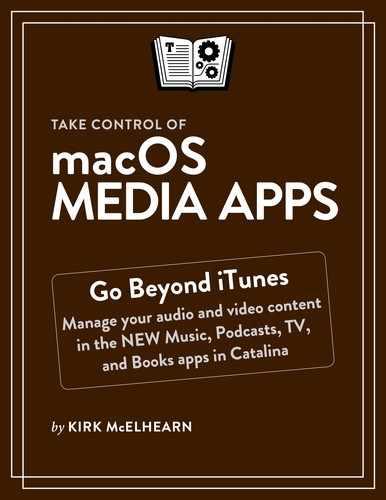Introduction
We are now living in a post-iTunes age.
iTunes was introduced in 2001, based on SoundJam, an early Mac MP3 player app that Apple acquired. In the beginning, it was a fairly simple app. It allowed users to organize, browse, and play their music collections. It could rip, play, and burn CDs; and it could play MP3 files and sync those music files to a handful of MP3 players. But the only digital media files we had 18 years ago were music files: we didn’t have videos, podcasts, or ebooks, though Apple added audiobook support to iTunes in 2002.
A lot changed over the years. As new digital media types became common, iTunes became a media center that organized, played, and synced not only music files (in several formats), but also videos, audiobooks, ebooks, podcasts, apps, ringtones, and voice memos. And along the way, Apple introduced Apple Music, the company’s streaming service that offers access to more than 50 million tracks.
With the release of macOS Catalina, Apple made the biggest change ever to The App Formerly Known as iTunes. There are now four apps, each named for the types of content they manage: Music, Podcasts, TV, and Books. (And the iTunes features for syncing iOS devices and iPods have been moved to the Finder.) As a result of this, the way you manage your media files has changed dramatically. Not just because you need to use up to four apps whereas in the past you only needed one, but also because these apps store their media files in four different locations. If you have a large media library, this can complicate the storage, management, and backup of those files.
I’ve long been a serious music fan, and I’ve amassed a music collection that contains more than 100,000 tracks, made up of thousands of CDs I’ve ripped and thousands of tracks I’ve purchased from the iTunes Store and other sources. I’m a big listener of classical music (more than half of my library), and one of my special loves is German art songs, or lieder. But I’m also a Deadhead (a fan of the Grateful Dead) and have hundreds of recordings of their live concerts. I like jazz, progressive rock, ambient music, vintage punk rock, and much more. I’m learning to play the shakuhachi (a Japanese end-blown flute) and have many recordings made with that instrument. I also regularly listen to audiobooks and podcasts, and I enjoy listening to audio recordings of Shakespeare’s plays. And I have a substantial video library, containing movies, TV shows, and music videos.
I currently own two Macs, an iPhone, two iPads, several iPods (remember them?), an Apple Watch, and an Apple TV. Over time, I have confronted the many hurdles that make using digital content on these devices a challenge.
In this book, I share much of what I’ve learned about managing media on a Mac. The wide range of music that I listen to, and the variety of content in my music library, has led me to discover the most practical and efficient solutions to the problems of ripping, tagging, organizing, managing, playing, and syncing a large media library.
There are several aspects of these media management apps that I don’t deal with. I mention only briefly apps used to play digital content on iOS devices, such as Apple’s Music app. I discuss syncing in order to show you how to put media—music, video, and audiobooks—on Apple’s iOS devices, but I don’t cover syncing other types of data, such as contacts, calendars, and photos.
If you’ve ever been frustrated while trying to efficiently manage media files on your Mac, read on.
